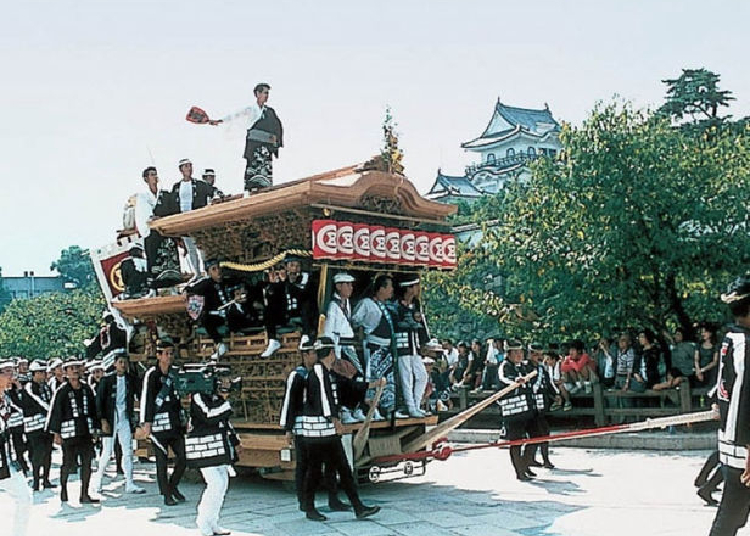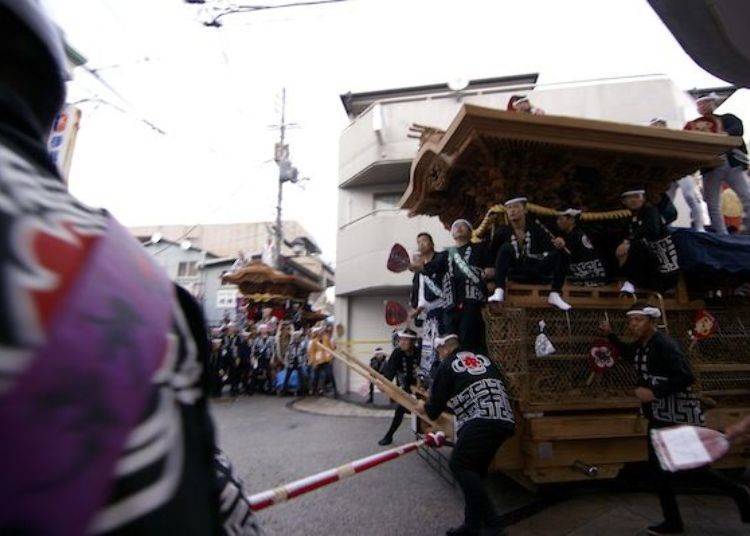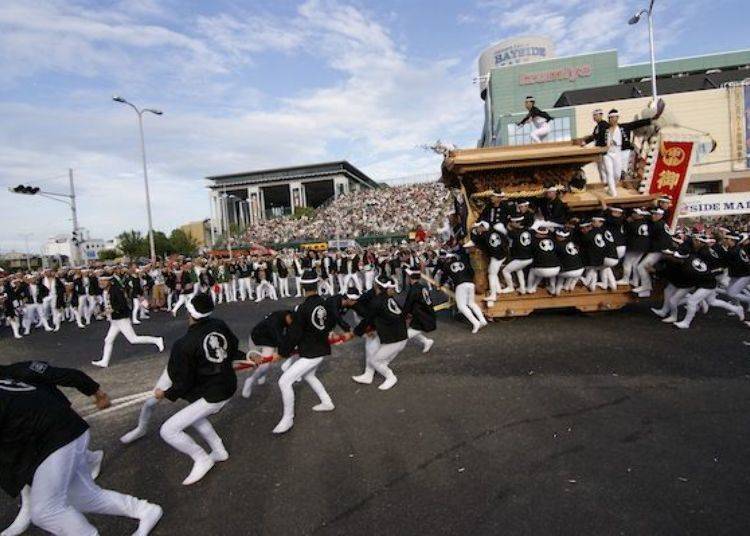
The Osaka Kishiwada Danjiri Matsuri, in which giant floats are pulled, is one of the most magnificent spectacles in Osaka and draws over 400,000 spectators every year.
It’s held over two days every September on the weekend before Respect for the Aged Day, on the third Monday of the month. The Saturday (two days before) is called yomiya and Sunday (the day before) is called motomiya.
In 2022, the festival will be held for the first time in three years!
Today we’re visiting Kishiwada, the town where the Kishiwada Danjiri Festival is held, to find out a bit more about its universal charm and appeal.
The Kishiwada Danjiri Festival means fall is on its way to Osaka Bay
Dashi (floats) are used at festivals all over the country, and the danjiri (festival carts) used around the Kinki region are also called dashi. It’s said there are as many as 500 floats in use for local festivals in Nara, Wakayama prefecture and the Kinki region, mainly around the Osaka Bay coastline and Awaji Island.
According to local researchers in Osaka, these floats fall into 10 different categories, depending on their structure and shape and the background to their construction. These include the Kishiwada style, Osaka style, Kobe style and so on.
The floats are accompanied by people playing musical instruments, such as taiko drums, gongs or flutes. Danjiri floats have a similar musical accompaniment. They are pulled along by hand.

Danjiri floats are also used at the Tenjin Festival at Osaka Tenmangu, but the most famous danjiri festival is in the castle town of Kishiwada in southern Osaka.
One of the features of the Kishiwada Festival is the yarimawashi (right angle turns) performed by the floats. There’s plenty of video footage available online if you’re interested in seeing what it’s all about.
A Kishiwada-style danjiri weighs about 4 tons and is 4m high. It’s made of Japanese zelkova wood.
Yarimawashi are the sharp right-angle turns made by the danjiri when they come to a corner or intersection on the castle town roads. The float accelerates as it approaches the turn and then changes direction sharply. Seeing these daring maneuvers is one of the highlights of the festival!

The tsunamoto is the name of the group of men at the front of the float who pull the ropes. The rudder at the back which steers the float is called the ushiroteko; the levers at the wheels in the front are used for turning and are called maetoko.
The daikugata (carpenter) dances around on the top of the float and shouts out directions and instructions. Ea…

